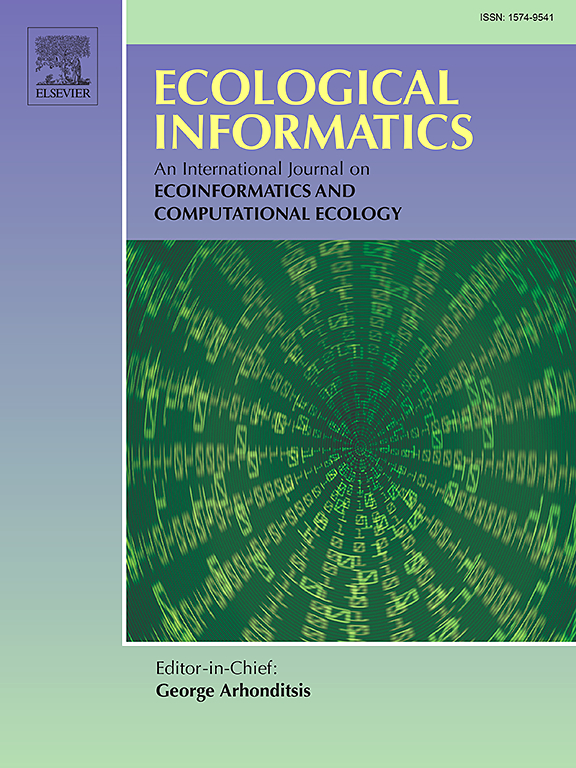Assessment of the green development level and the identification of obstacles to grass-based livestock husbandry in the farming–pastoral ecotone of northern China
IF 5.8
2区 环境科学与生态学
Q1 ECOLOGY
引用次数: 0
Abstract
The green development of livestock husbandry represents the balance between livestock production and environmental protection. In this study, a comprehensive framework and evaluation indices were developed for assessing the green development level of grass-based livestock husbandry (GDL-GLiH), including the green growth degree (GGD), green carrying capacity (GCC) and green guarantee capability (GGC). On the basis of the combined weight Technique Order Preference by Similarity to an Ideal Solution (TOPSIS) model and an analysis of obstacles, the GDL-GLiH in the farming–pastoral ecotone of northern China (FPEN) was evaluated, and the main obstacles were identified. The results indicated a general upward trend in the GDL-GLiH across the FPEN, increasing from 0.343 in 2010 to 0.416 in 2020, reflecting a growth rate of 21.138 %. Among the three dimensions, the GGC showed the most substantial increase of 95.937 %, whereas the GCC exhibited minimal growth of 1.006 %. Spatial variations were observed, with livestock-dominated systems exhibiting higher average levels (0.398) but lower growth rates (19.740 %) than crop-dominated systems (0.356; 22.252 %). Additionally, the production of milk (average obstacle degree: 12.970 %), the proportion of forage cultivation in crop cultivation (11.312 %), the total mechanical power per unit agricultural sown area (10.081 %) and the availability of purebred bovine and ovine breeding stock (9.034 %) were identified as the key obstacles. This study provides a holistic assessment framework for green livestock development and serves as a reference for formulating green development strategies in the FPEN, as well as in similar agricultural systems.
中国北方农牧交错带草地畜牧业绿色发展水平评价及障碍识别
畜牧业的绿色发展体现了畜牧业生产与环境保护之间的平衡。本研究构建了草基畜牧业绿色发展水平的综合评价框架和评价指标,包括绿色生长度(GGD)、绿色承载能力(GCC)和绿色保障能力(GGC)。基于TOPSIS模型和障碍分析,对中国北方农牧交错带(FPEN)的GDL-GLiH进行了评价,并确定了主要障碍。结果表明,GDL-GLiH总体呈上升趋势,从2010年的0.343上升到2020年的0.416,增长率为21.138%。三个维度中,GGC增幅最大,达95.937%,GCC增幅最小,仅为1.006%。在空间上存在差异,以牲畜为主导的系统的平均水平(0.398)高于作物为主导的系统(0.356),但增长率(19.740%)低于作物为主导的系统(0.356;22.252%)。其中,产奶量(平均障碍度为12.970%)、饲料种植占作物种植的比例(11.312%)、单位农业播种面积总机械功率(10.081%)和纯种牛和绵羊的可利用性(9.034%)是主要障碍。本研究为绿色畜牧业发展提供了一个整体的评估框架,为FPEN以及类似农业系统制定绿色发展战略提供了参考。
本文章由计算机程序翻译,如有差异,请以英文原文为准。
求助全文
约1分钟内获得全文
求助全文
来源期刊

Ecological Informatics
环境科学-生态学
CiteScore
8.30
自引率
11.80%
发文量
346
审稿时长
46 days
期刊介绍:
The journal Ecological Informatics is devoted to the publication of high quality, peer-reviewed articles on all aspects of computational ecology, data science and biogeography. The scope of the journal takes into account the data-intensive nature of ecology, the growing capacity of information technology to access, harness and leverage complex data as well as the critical need for informing sustainable management in view of global environmental and climate change.
The nature of the journal is interdisciplinary at the crossover between ecology and informatics. It focuses on novel concepts and techniques for image- and genome-based monitoring and interpretation, sensor- and multimedia-based data acquisition, internet-based data archiving and sharing, data assimilation, modelling and prediction of ecological data.
 求助内容:
求助内容: 应助结果提醒方式:
应助结果提醒方式:


